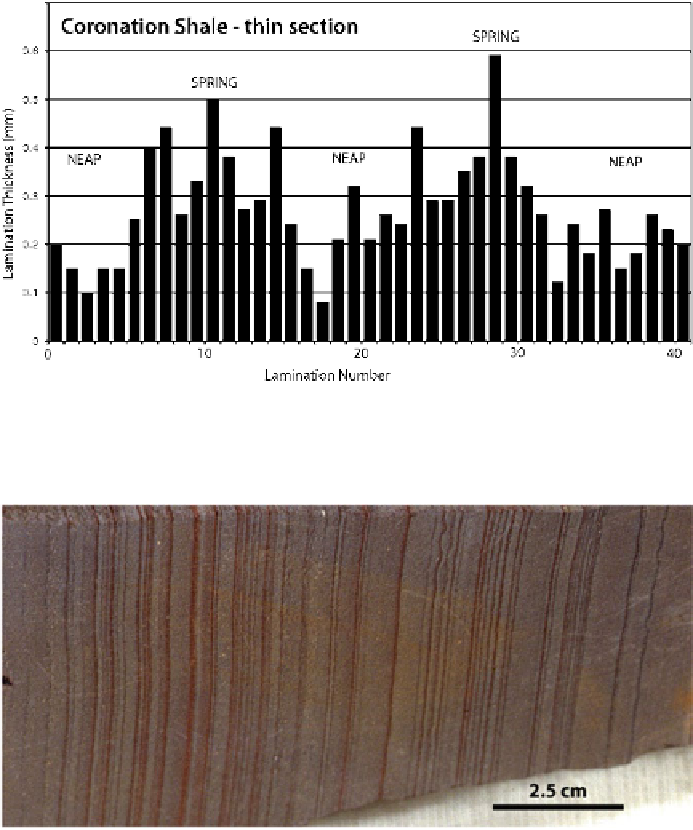Geology Reference
In-Depth Information
Fig. 15.14
Bar graphs of siltstone laminae thicknesses for rhythmically bedded siltstone/mudstone in the Coronation Formation.
Note rhythmic thickening and thinning of laminae interpreted as neap-spring-neap cycles
Fig. 15.15
Cut slab of rhythmically bedded sandstone/mudstone at the top of the Randfontein Formation, Johannesburg Subgroup,
Witwatersrand Supergroup. Slab is 7.5 cm wide
and Colorado, respectively, have been interpreted as
tidal shelf deposits (Soegaard and Eriksson
1985
;
Harris and Eriksson
1990
) on the basis of qualitative
criteria. Both formations contain thinly interlaminated
siltstone and mudstone but rhythmic patterns have not
been identified. The Waterberg Group in South Africa
is a dominantly braided alluvial succession but thin
intervals of flaser, wavy and lenticular bedding have
been interpreted as a product of tidal reworking in
embayments between braid deltas (Vos and Eriksson
1977
; Eriksson and Vos
1979
). Paleocurrent data for
the inferred tidal facies are based on ripple lee-face
azimuths and a wave (lacustrine) origin for this facies
remains a viable alternative. The Pokegama Quartzite
and equivalents in the Lake Superior region have long
been interpreted as tidal deposits based on bimodal-
bipolar paleocurrent patterns, herringbone cross
bedding and tidal bedding (Ojakangas
1983
). More
recently, Ojakangas (
1996
) has identified an interval of
alternating thicker and thinner laminae in the lower-
most Pokegama that provide evidence for semidiurnal
inequality of tidal currents. Runzel marks (wrinkle
marks), mudcracks and raindrop impressions in finer-
grained facies of the Pokegama Quartzite are considered
to provide evidence for periodic exposure possibly on
tidal flats (Ojakangas
1983
).

